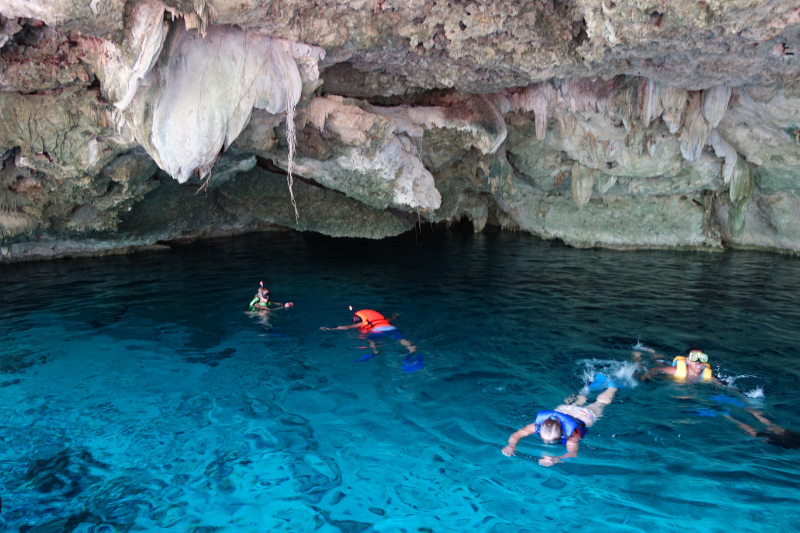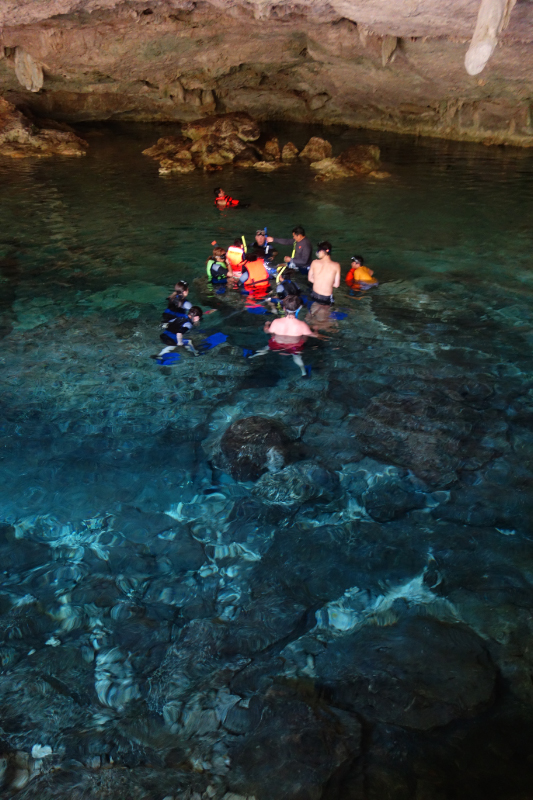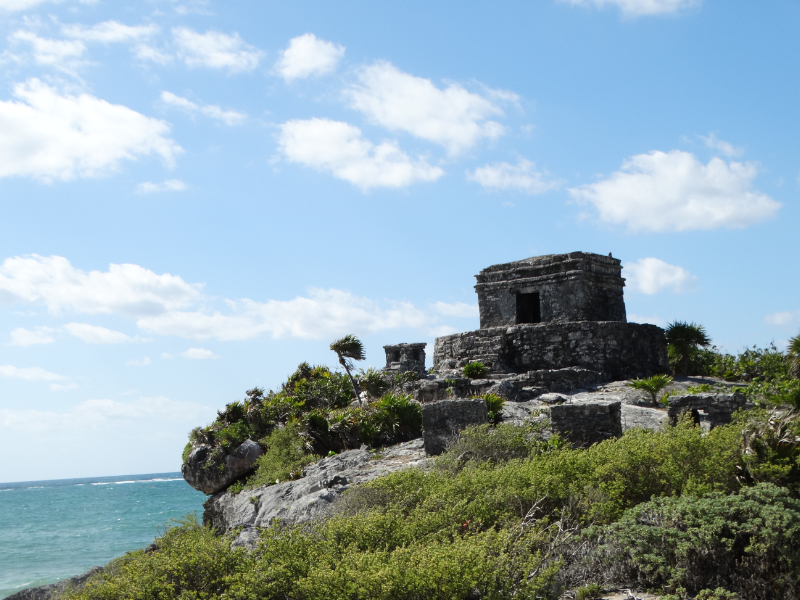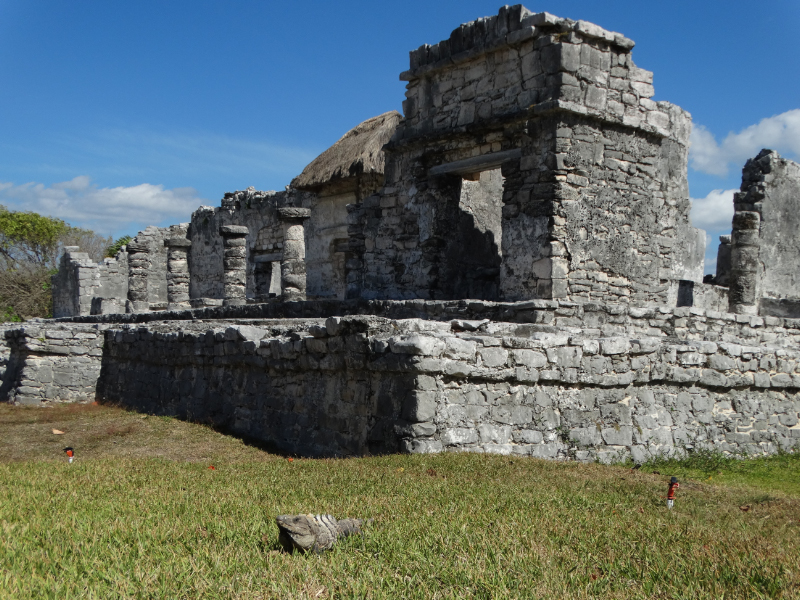Tuesday 31 March to Thursday 2 April
We arrived in Cancun in the evening, constantly confounded by Mexico’s many time zones – was it 8pm or 9pm? It was a long wait for a shared taxi and then a long drive through Zona Hotelera to our hotel in town.
We spent the next day doing some messages, booking ahead and picking up a hire car.
Our hotel in downtown Cancun was pleasant enough but there were no restaurants close by that were enticing.
Cancun is a resort town with a lagoon and a thin strip of land between the lagoon and the Caribbean Sea. The Zona Hotelera is on this strip – think Surfer’s Paradise on 22km with all the big name hotels, condominiums and severely restricted access to the beach. There is an entertainment zone with fast food, big bars and strip joints, but holiday makers are mostly restricted to the very large hotels.
Our plan was to pick up a car and drive via Chichen Itza to Merida, crossing the Yucatan peninsula.
We planned to stop at Playa de Carmen en route to Tulum, but it was too big and difficult to park for a busy beach. The road to Tulum was good, nearly like a motorway. The first town that the road went through was in fact Tulum, our destination.
We had trouble finding our accommodation. It was out of town on roads not yet mapped. It turned out to be pleasant enough although more like a bed-and-breakfast, and too far to walk into town. At least we had the car.
We were up early and breakfasted, so we could visit the historical site of Zama before the day trippers came in, but it was already busy with many tourist buses rolling in.
After Teotihuocan it was not an outstanding site to visit, except for its position by the sea. Apparently the buildings were painted brilliant red which amazed the Spanish conquerers. This was a port city complete with palace, temples, altars, cenotes and surrounded by a wall. It was a trading post along the Caribbean Sea for the Mayans.
Much to the delight of many tourists, the iguanas were not shy. They went about their business as multiple tourists took multiple shots of them.
Next stop was a cenote to swim. We were told about a few in the area with Dos Oyos (two eyes) being the most beautiful. We chose to swim only, however there were options to snorkel or scuba dive between connecting water holes. In fact these water holes are connected by underground rivers which run for over 200km.
There are no ground level rivers in the Yucatan, all the fresh water comes from springs under the limestone soil. The cenotes (or waterholes) are sinkholes in the limestone, many of them connected. These were of great importance to the Mayan people both as a source of fresh water and for religious or ceremonial purposes.
This cenote, expensive to enter at 200 pesos (about $16AUD) each, was busy. People jumping off the platforms, swimming both on the surface and under it. The water was crystal clear and a comfortable temperature.
We then took a drive along the Hotelera Zona of Tulum. Unlike Cancun with its world renowned high rise hotels set in exquisite gardens, Tulum is more low key with Eco-lodges, vegetarian restaurants and spa centres. Like the rest of Mexico, access to the beach is not restricted, however the hotels are side by side without pathways to the beach.
We drove into the biosphere (national park) and once again, access to the beach was not available as private homes and resorts took up the space between the road and the water’s edge. We found a 20m strip that wasn’t restricted in our 20km run.
Within the biosphere is a large lagoon. The bridge that crosses the entrance of the lagoon is a popular fishing spot for the locals and photo stop for the visitors. A lone alligator was sunning himself on the water’s edge and the locals, like the birds, were hauling in a decent catch of fish.
e_header.jpg)











































